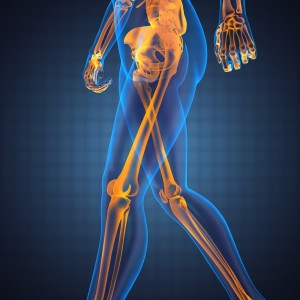
Osteoarthritis (OA) of the hip or knee joints is a very common condition amongst the elderly; however, what is often forgotten is that its onset is often while people are still in paid employment, which may lead to perceived difficulties in performing work tasks. We Elves are very hard-working individuals, so I asked myself, in reality, would having hip or knee OA affect my work participation, and would it lead to early retirement?
Therefore, I was delighted to find a systematic review by Bieleman et al (2011) in the Journal of Rheumatology that seemed to be able to provide some answers to these questions.
Here’s what they did
A search strategy was conducted in Medline, Embase, CINAHL and PsycInfo (up until June 2009) that included studies that examined the effect of OA on work participation, i.e. work productivity, sick leave, and early retirement.
Here’s what they found
1861 articles were identified; after the inclusion criteria were applied 53 studies were examined thoroughly. Finally, 14 articles were included in the review from which data were extracted and analysed. The articles included: 4 surveys; 2 prospective cohort studies; and 8 cross-sectional studies.
The author’s concluded that

OA of the hip or knee could not be proven to be a strong reason for leaving the work force through sick leave or early retirement.
“The effect of OA of the hip or knee on work participation is varied. Despite the functional limitations of OA many people had paid employment and managed to stay at work. In many cases there was a mild negative effect of OA on work participation; however, only a small proportion of workers required early retirement. To summarise, OA of the hip or knee could not be proven to be a strong reason for leaving the work force through sick leave or early retirement.”
The Musculoskeletal Elf’s views
 What was interesting (and rather disappointing) when reading this review is the fact that, although 1861 titles were found, after applying the search strategy only 14 could be included. This primarily was because most studies only reported on ‘work’ as a secondary or tertiary outcome measure. Is this because researchers have preconceived ideas that if a person has osteoarthritis then it is unlikely that they are in employment? Or is it because many researchers are still working within a biomedical rather than biopsychosocial model of care, therefore, have not really shifted in their thinking to consider the effects of a condition on ‘participation’ (to use the terminology from the World Health Organisation’s International Classification of Functioning).
What was interesting (and rather disappointing) when reading this review is the fact that, although 1861 titles were found, after applying the search strategy only 14 could be included. This primarily was because most studies only reported on ‘work’ as a secondary or tertiary outcome measure. Is this because researchers have preconceived ideas that if a person has osteoarthritis then it is unlikely that they are in employment? Or is it because many researchers are still working within a biomedical rather than biopsychosocial model of care, therefore, have not really shifted in their thinking to consider the effects of a condition on ‘participation’ (to use the terminology from the World Health Organisation’s International Classification of Functioning).
On a recent visit to the Arthritis Research UK website I noted that, in a list of daily life topics related to osteoarthritis, ‘work’ was the 20th topic on a list of 23 related to the disease, coming after information on stairlifts and splints. Is this the right message to be putting out to people?
There is strong evidence that work is generally good for physical and mental health and well-being, and worklessness is associated with poorer physical and mental health and well-being (Waddell & Burton, 2006). Therefore, I strongly urge all healthcare professionals to do their utmost to provide accurate information to people with osteoarthritis to support and facilitate their future work participation.
As for my Elf colleagues and me, we will endeavour to work away to a merry old age, whether in shoe mending, toy making or providing tours of Lapland.
Do you recommend continued work participation for your patients with osteoarthritis? What is your view on this review, will it change your clinical practice? Send us your views on this blog and become part of the Musculoskeletal Elf community.
Links
Bieleman, HJ, Bierma-Zeinstra, SMA, Oosterveld, FGJ, Reneman, MF, Verhagen, AP, Groothoff, JW The effects of osteoarthritis of the hip or knee on work participation, 2011, Journal of Rheumatology, 38, 9, 1835-1843 [Pubmed abstract]
World Health Organisation International Classification of Functioning, 2001, available from http://www.who.int/classifications/icf/en/ [accessed 1-8-12]
Arthritis Research UK – http://www.arthritisresearchuk.org/ [accessed 1-8-12]
Waddell, G, Burton, K Is work good for your health and well-being? 2006, The Stationary Office, Norwich, ISBN 0-11-703694-3 [Link to PDF]

Hi Heather, like the sound of a Lapland tour!
About work, the NHS GG & C MSK out patient physio service certainly encourage all of our patients (with OA and any other condition) to stay in work and return to work or meaningful activity as soon as possible and get involved in tackling barriers to that. We record work status pre and post intervention as one of our key performance indicators and recognise the huge benefits of ‘good’ work. One practical resource we use was developed by a small team led by Carolyn McIntosh called ‘Management of the Injured worker: An Information Pack for Physiotherapists’. It is practical, well used by our clinicians and available online: Word document.
Hi Karen,
Thanks for your comments. Yes, I would recommend that information pack that you mentioned. I use it in my vocational rehabilitation teaching with my undergraduate students, who find it very useful. For all the other Elves out there, the pack can be found at http://www.employabilityinscotland.com/key-themes/health/resources-for-health-staff Happy reading.
Great blog- I think many studies and organisations limit patients health outcomes and functional abilities by their own preconceptions. Physical activity and regular exercise should promote all aspects of health and wellbeing, whatever this means to the patients and their care givers. Work is an important self esteem, mental health and financial component of overall health, and we know from The Marmott Report that social factors such as returning to work play an important part in overall health. Great blog… and food for thought! Please @exerciseworks with any blogs of this type and we will be happy to RT!
Hi Ann,
Glad you enjoyed the blog. I agree with you that often healthcare professionals and organisations can actually act as obstacles to people’s recovery by suggesting unnecessary restrictions in patients’ work activities. For those of you wishing to read more about the Marmot Review please visit http://www.instituteofhealthequity.org/projects/employment-and-work-task-group-report